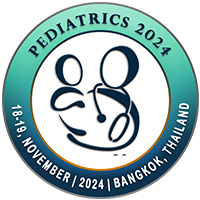
Emmanouel Hatzipantelis
Aristotle University of Thessaloniki, GreeceTitle: Cancer in adolescents: “The lost tribe”
Abstract
Cancer in adolescents and young adults (AYAs) is defined as diagnoses occurring among those aged 15 to 39 years and is unique from cancer diagnosed in other age groups because of important differences in the distribution of cancer types, intrinsic and extrinsic risk factors, tumor biology, and prognosis and survivorship. Tumors in AYAs are molecularly distinct from those in both younger and older age groups, possibly suggesting differences in etiology and effective treatment. In addition, compared with older patients with cancer, AYAs have a higher risk of long-term and late effects, including infertility, sexual dysfunction, cardiovascular disease, and future cancers, whereas compared with childhood cancer survivors, the risk of severe late effects is lower. They are also more likely to experience delays in diagnosis for some cancers because of higher uninsured rates, a lack of cost-effective early detection methods, and the rarity of cancer at this age. Despite rapid progress in the scientific understanding of cancer in AYAs, important research gaps in etiology, basic biology, treatment, and survivorship persist, partly because this age group continues to be grouped with children and/or older adults in many epidemiologic studies. Although there has been rapid progress in the scientific understanding of cancer in AYAs over the last decade, several research gaps in etiology, basic biology, treatment, and survivorship remain. AYAs diagnosed with cancer also continue to face numerous challenges in health care access during early life transitions, which can negatively impact the timeliness of and adherence to treatment. Further progress in reducing cancer morbidity and mortality among AYAs could be addressed through more equitable access to health care; increasing clinical trial enrollment; expanding research on etiology, basic biology, and survivorship; and greater alertness among clinicians and patients for early symptoms and signs of cancer. Research on cancer in AYAs should also consider the heterogeneity in cancer occurrence within this patient population.
Biography
TBA

